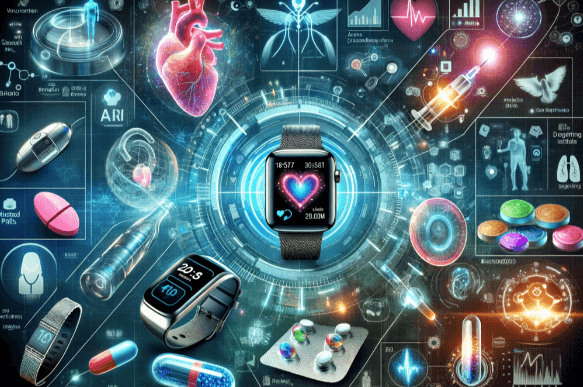Emerging Trends in Wearable Tech for 2025

The landscape of wearable technology in 2025 is poised for significant evolution. Advances are increasingly centered on integrating sophisticated sensors for real-time biometric feedback, enabling proactive health management. Meanwhile, AI and machine learning algorithms are set to refine data analysis, offering personalized insights while emphasizing user privacy. Sustainability concerns are prompting eco-friendly designs, and improvements in connectivity aim to extend device autonomy. These developments suggest a future where wearables become more autonomous, personalized, and environmentally conscious, raising questions about their broader impact.
Advanced Health Monitoring and Biofeedback Devices
How will the integration of advanced sensors and artificial intelligence transform health monitoring in wearable devices by 2025?
These innovations will enable personalized health analytics and real-time biometric feedback, empowering individuals with autonomous insights.
This evolution fosters greater freedom over personal wellness, allowing users to proactively manage their health without dependence on traditional healthcare systems or constant external guidance.
Integration of AI and Machine Learning in Wearables
The integration of artificial intelligence (AI) and machine learning (ML) into wearable devices by 2025 is poised to revolutionize personalized health management through enhanced data analysis and predictive capabilities.
As personalization algorithms evolve, users gain greater autonomy, yet privacy concerns remain critical, emphasizing the need for balanced innovation that preserves user freedom while safeguarding sensitive information.
Enhanced Sustainability and Eco-Friendly Designs
As wearable technology advances through the integration of AI and machine learning, attention increasingly shifts toward sustainability, eco-friendly design principles, and innovative uses such as QR code functionality.
Innovations such as solar textiles and biodegradable materials aim to reduce environmental impact, empowering users with freedom from traditional energy sources and waste.
This shift fosters sustainable choices, aligning technological progress with ecological responsibility for a greener future.
Seamless Connectivity and Extended Battery Life
Advancements in seamless connectivity and battery technology are set to revolutionize wearable devices by enabling uninterrupted interaction and prolonged usage periods.
Wireless charging and low power sensors will facilitate continuous operation without constraints, empowering users with greater freedom.
These innovations promise future wearables that seamlessly integrate into daily life, reducing reliance on frequent recharging and enhancing autonomous performance.
See also: Digital Twins: What They Are and How They’re Used
Conclusion
As wearable technology advances toward 2025, the integration of sophisticated sensors and AI-driven insights promises a transformative impact on personal health management. Will these innovations truly lead to a more sustainable and autonomous future? By prioritizing eco-friendly materials and seamless connectivity, these devices are set to redefine wellness, empowering users with personalized, real-time feedback while maintaining privacy. Ultimately, the trajectory suggests a future where wearable tech becomes an indispensable partner in proactive health and sustainability.



